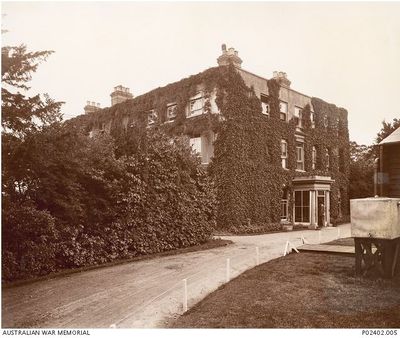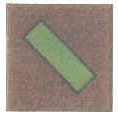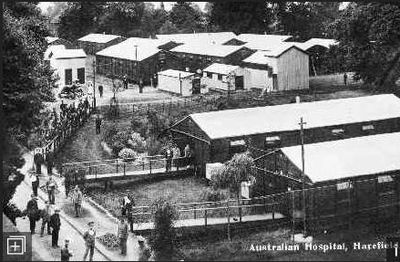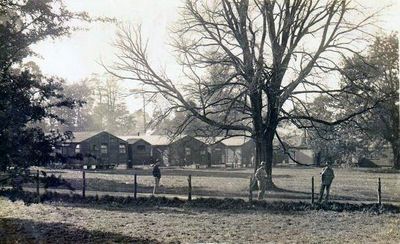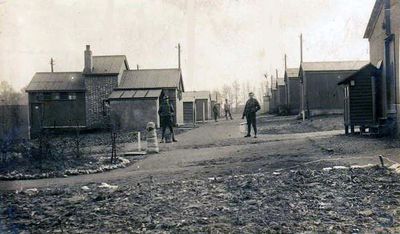Difference between revisions of "1st Australian Auxiliary Hospital"
From Our Contribution
(→Soldier Patients by date admitted) |
(→Soldier Patients by date admitted) |
||
| (40 intermediate revisions by the same user not shown) | |||
| Line 39: | Line 39: | ||
==General Information== | ==General Information== | ||
| − | + | Initially formed in Egypt where it was opened 19 January 1915 at Luna Park, Cairo, Egypt, and closed on 10 July 1916, with its designation being transferred to the Harefield establishment in England. | |
| + | |||
In November 1914, Mr and Mrs Charles Hillyard-Leake (Australians resident in the UK) had offered the property known as "Harefield Park", Harefield, Middlesex, to be used as a home for convalescent wounded soldiers of the A.I.F. Their offer was accepted in December 1914. | In November 1914, Mr and Mrs Charles Hillyard-Leake (Australians resident in the UK) had offered the property known as "Harefield Park", Harefield, Middlesex, to be used as a home for convalescent wounded soldiers of the A.I.F. Their offer was accepted in December 1914. | ||
| + | |||
At the time it was accepted, authorities estimated that the house would accommodate 50 soldiers in winter and up to 150 during spring and summer. At the height of its use the property accommodated over 1,000 beds. The patients were housed in 36 large huts dispersed throughout Harefield Park. Nearly 50 buildings were in use, including workshops, garages, stores, messes, canteens, a recreation hall (where concerts and film shows were held), a billiards rooms, writing rooms, a library, a cookhouse, a detention room and a mortuary. For entertainment, tours to London were arranged and paid for out of canteen funds, and the ladies of the district made their cars available for country trips, picnics and journeys to and from the railway station, both for patients and visitors. | At the time it was accepted, authorities estimated that the house would accommodate 50 soldiers in winter and up to 150 during spring and summer. At the height of its use the property accommodated over 1,000 beds. The patients were housed in 36 large huts dispersed throughout Harefield Park. Nearly 50 buildings were in use, including workshops, garages, stores, messes, canteens, a recreation hall (where concerts and film shows were held), a billiards rooms, writing rooms, a library, a cookhouse, a detention room and a mortuary. For entertainment, tours to London were arranged and paid for out of canteen funds, and the ladies of the district made their cars available for country trips, picnics and journeys to and from the railway station, both for patients and visitors. | ||
| + | |||
The first staff for this hospital left Australia on [[HMAT A54 Runic]] in April 1915 and comprised 1 Captain Commanding Officer and his staff, along with a Matron and five nurses. Staff levels in 1916 were: Medical Staff of 1 Lieutenant Colonel, 5 Majors, 12 Captains, 2 Hon Lieutenant Dentists; Nursing Staff of 1 Matron; 20 Nursing Sisters; 36 Staff Nurses; 6 Masseuses (male or female); Administration/Support Staff of 1 Sergeant Major, 15 Sergeants/Staff Sergeants, 10 Corporals, 9 Privates, and a large number of volunteers. | The first staff for this hospital left Australia on [[HMAT A54 Runic]] in April 1915 and comprised 1 Captain Commanding Officer and his staff, along with a Matron and five nurses. Staff levels in 1916 were: Medical Staff of 1 Lieutenant Colonel, 5 Majors, 12 Captains, 2 Hon Lieutenant Dentists; Nursing Staff of 1 Matron; 20 Nursing Sisters; 36 Staff Nurses; 6 Masseuses (male or female); Administration/Support Staff of 1 Sergeant Major, 15 Sergeants/Staff Sergeants, 10 Corporals, 9 Privates, and a large number of volunteers. | ||
| + | |||
The hospital was tasked with providing a rest home to allow soldiers of all ranks to recuperate after sickness or injury, and as a depot for collecting invalids for return to Australia. However, in time all hospital functions were performed, and by 1918 it was a centre for eye, ear, nose and throat diseases. Mostly they were surgical cases and it was possible for special attention to be given to amputees before their return to Australia. | The hospital was tasked with providing a rest home to allow soldiers of all ranks to recuperate after sickness or injury, and as a depot for collecting invalids for return to Australia. However, in time all hospital functions were performed, and by 1918 it was a centre for eye, ear, nose and throat diseases. Mostly they were surgical cases and it was possible for special attention to be given to amputees before their return to Australia. | ||
| − | |||
| − | At its peak there were more than 40 buildings in use. A small magazine titled Harefield Park Boomerang was regularly produced (a 2 volume bound collection of these are held at the Australian War Memorial Library). | + | |
| + | The war hospital closed on 31st December 1918, but today the site is home to Harefield Hospital, one of the top cardiac hospitals in the world. Links to its Australian past remain, with pictures of the men that were treated at the hospital in the Anzac Centre, opened in 2003 and home to the Out-Patients Department, Echo-cardiology, the transplant clinic and two cardiac operating theatres. In addition the annual Anzac Day service is held at St. Mary’s church where 112 Australian servicemen from the First World War are buried. At its peak there were more than 40 buildings in use. A small magazine titled Harefield Park Boomerang was regularly produced (a 2 volume bound collection of these are held at the Australian War Memorial Library). | ||
==Staff== | ==Staff== | ||
| Line 60: | Line 64: | ||
'''Egypt'''<br /> | '''Egypt'''<br /> | ||
''1915'' | ''1915'' | ||
| − | *[[John Alexander Adamson]] 26 Sep - 22 Nov 1915 | + | * [[John Alexander Adamson]] 26 Sep - 22 Nov 1915 |
| − | *[[Edward (Ted) Harry Darby]] 8 Aug - 28 Sep 1915 | + | * † [[Edward (Ted) Harry Darby]] 8 Aug - 28 Sep 1915 |
| − | *[[Harold Marshall]] 13 Sep - 4 Oct 1915 | + | * [[Ernest Wright Holroyd]] 25 Aug - 5 Sep 1915 |
| − | *[[Fritz Robert Jaentsch]] 19 Sep - 11 Oct 1915 | + | * [[Harold V Marshall]] 13 Sep - 4 Oct 1915 |
| − | *[[John McLeod Brown]] 15 Nov - 8 Dec 1915 | + | * [[Fritz Robert Jaentsch]] 19 Sep - 11 Oct 1915 |
| − | *[[William George Tait]] 11 Dec 1916 - 17 Jan 1917 | + | * † [[John McLeod Brown]] 15 Nov - 8 Dec 1915 |
| + | * [[William George Tait]] 11 Dec 1916 - 17 Jan 1917 | ||
'''1916''' | '''1916''' | ||
| − | *[[John Francis Grabham MM]] 31 Jan - 13 Mar 1916 | + | * [[John Francis Grabham MM]] 31 Jan - 13 Mar 1916 |
| − | *[[Frederick Selkirk]] 11 Feb - 18 Apr 1916 | + | * [[Frederick Selkirk]] 11 Feb - 18 Apr 1916 |
| − | *[[John Harold Rupert Smith]] 16 - 21 Feb 1916 | + | * [[John Harold Rupert Smith]] 16 - 21 Feb 1916 |
| − | *[[Victor Thomas Emanuel Compassi]] 9- 19 Mar 1916 | + | * [[Victor Thomas Emanuel Compassi]] 9- 19 Mar 1916 |
| − | *[[Herbert William Coxhead]] 25 May 1916 | + | * † [[Herbert William Coxhead]] 25 May 1916 |
| − | *[[Thomas Allan Bottrell]] 13 Jun - 10 Jul 1916 | + | * [[Walter Raymond Farnham]] 25 - 28 May 1916 |
| + | * [[Thomas Allan Bottrell]] 13 Jun - 10 Jul 1916 | ||
'''England'''<br /> | '''England'''<br /> | ||
''1916'' | ''1916'' | ||
| − | *[[William Edward Clarence Green]] 31 May - 24 Jun 1916 | + | * [[William Edward Clarence Green]] 31 May - 24 Jun 1916 |
| − | *[[Arthur Charles Cam]] 14 - 20 Jun 1916 | + | * [[Arthur Charles Cam]] 14 - 20 Jun 1916 |
| − | *[[John Alexander Spilsbury]] Jun - 6 Jul 1916 | + | * [[John Alexander Spilsbury]] Jun - 6 Jul 1916 |
| − | *[[William Harrington Edward Watson]] 5 - 11 Jul 1916 | + | * [[William Harrington Edward Watson]] 5 - 11 Jul 1916 |
| − | *[[Albert Edward John Walls]] 12 Jul - 16 Aug 1916 | + | * † [[Albert Edward John Walls]] 12 Jul - 16 Aug 1916 |
| − | *[[John James Thorpe]] 24 Aug - 8 Sep 1916 | + | * [[John James Thorpe]] 24 Aug - 8 Sep 1916 |
| − | *[[James Barber]] 30 Aug - 8 Sep 1916 | + | * [[James Barber]] 30 Aug - 8 Sep 1916 |
| − | *[[William Mathews]] 31 Aug - 12 Oct 1916 | + | * [[William Mathews]] 31 Aug - 12 Oct 1916 |
| − | *[[John Paterson Henderson]] 6 Sep | + | * [[John Paterson Henderson]] 6 - 29 Sep 1916 |
| − | *[[Edgar Leslie Livermore]] 13 Sep - 25 Oct 1916 | + | * [[Edgar Leslie Livermore]] 13 Sep - 25 Oct 1916 |
| − | *[[Edward Patrick Barker]] 21 - 25 Sep 1916 | + | * [[Edward Patrick Barker]] 21 - 25 Sep 1916 |
| − | *[[Alfred Warburton Chapman (Snr)]] 5 Oct - 6 Dec 1916 | + | * [[Alfred Warburton Chapman (Snr)]] 5 Oct - 6 Dec 1916 |
| − | *[[Percy Goodall]] 10 - 23 Oct 1916 | + | * [[Percy Goodall]] 10 - 23 Oct 1916 |
| − | *[[Francis Crowe]] 3 - 23 Nov 1916 | + | * [[William Edward Butcher MM RMG MID]] 10 Oct - 19 Dec 1916 |
| − | *[[John Hall]] 16 Nov - 7 Dec 1917 | + | * [[Francis Crowe]] 3 - 23 Nov 1916 |
| − | *[[Lionel William Gibbs]] 23 - 27 Nov 1916 | + | * [[John Hall]] 16 Nov - 7 Dec 1917 |
| − | *[[Reginald Peter Lewis]] 27 Nov 1916 - 8 Jan 1917 | + | * [[Lionel William Gibbs]] 23 - 27 Nov 1916 |
| − | *[[Patrick Wilford Kelly]] 8 - 20 Dec 1916 | + | * † [[Reginald Peter Lewis]] 27 Nov 1916 - 8 Jan 1917 |
| + | * [[Patrick Wilford Kelly]] 8 - 20 Dec 1916 | ||
''1917'' | ''1917'' | ||
| − | *[[Thomas Bird]] 24 Jan - 20 Feb 1917 | + | * [[Thomas Bird]] 24 Jan - 20 Feb 1917 |
| − | *[[George Harris]] 13 Mar 1917 | + | * [[George Harris]] 13 Mar - 11 Apr 1917 |
| − | *[[William Heath]] 11 Apr 1917 - 26 Apr 1917 | + | * [[William Heath]] 11 Apr 1917 - 26 Apr 1917 |
| − | *[[Charles Frederick McKay]] 2 May 1917 | + | * [[Charles Frederick McKay]] 2 May 1917 |
| − | *[[John Henry Holroyd]] 15 - 22 May 1917 | + | * [[John Henry Holroyd]] 15 - 22 May 1917 |
| − | *[[George Henry Aspinall]] 25 Jun 1917 - 3 Jul 1917 | + | * [[George Henry Aspinall]] 25 Jun 1917 - 3 Jul 1917 |
| − | *[[John Henry Whitfield]] 3 - 19 Jul 1917 | + | * [[John Henry Whitfield]] 3 - 19 Jul 1917 |
| − | *[[Donald Gordon Melville Huggins]] 17 - 24 Jul 1917 | + | * [[Donald Gordon Melville Huggins]] 17 - 24 Jul 1917 |
| − | *[[Thomas Ramsell]] 9 - 12 Aug 1917 | + | * [[Thomas Ramsell]] 9 - 12 Aug 1917 |
| − | *[[John Thomas Buckland]] 21 Aug - 16 Sep 1917 | + | * [[John Thomas Buckland]] 21 Aug - 16 Sep 1917 |
| − | *[[Albert Victor Berry]] 27 Aug - 3 Sep 1917 | + | * [[Gordon Devereux MM]] 24 Aug - 3 Sep 1917 |
| − | *[[Arthur Candish]] 28 Aug - 4 Sep 1917 | + | * † [[Albert Victor Berry]] 27 Aug - 3 Sep 1917 |
| − | *[[Archibald Shepherd]] 29 - 31 Aug 1917 | + | * [[Arthur Candish]] 28 Aug - 4 Sep 1917 |
| − | *[[Leonard George Morgan]] 8 - 11 Sep 1917 | + | * [[Archibald Shepherd]] 29 - 31 Aug 1917 |
| − | *[[Alexander Robinson]] 17 - | + | * [[Leonard George Morgan]] 8 - 11 Sep 1917 |
| − | *[[Matthew Harwood]] 20 Sep - 2 Oct 1917 | + | * [[Arnold Thorp]] 15 - 22 Sep 1917 |
| − | *[[Henry John Robert Saint]] 28 Sep - 15 Oct 1917 | + | * [[Alexander Robinson]] 17 - 1 Nov 1917 |
| − | *[[John Hall]] 3 Oct - 27 Nov 1917 | + | * [[Matthew Harwood]] 20 Sep - 2 Oct 1917 |
| − | *[[William Edward McKenna]] 15 - 21 Oct 1917 | + | * [[Henry John Robert Saint]] 28 Sep - 15 Oct 1917 |
| − | *[[John Humphrey Coyle]] 19 - 23 Oct 1917 | + | * [[John Hall]] 3 Oct - 27 Nov 1917 |
| − | *[[Samuel Vivian Mortimer]] 2 - 7 Nov 1917 | + | * [[John Grant Watt MM & Bar]] 13 - 16 Oct 1917 |
| − | *[[Albert | + | * [[William Edward McKenna]] 15 - 21 Oct 1917 |
| − | *[[Leslie Jeffery Harvey]] 18 Dec 1917 - 5 Jan 1918 | + | * [[John Humphrey Coyle]] 19 - 23 Oct 1917 |
| − | *[[John Thomas Buckland]] 27 - 31 Dec 1917 | + | * [[Robert Frank Bickford]] 31 Oct - 11 Nov 1917 |
| + | * [[Samuel Vivian Mortimer]] 2 - 7 Nov 1917 | ||
| + | * [[Albert Bishop]] 27 Nov - Dec 1917 | ||
| + | * [[Leslie Jeffery Harvey]] 18 Dec 1917 - 5 Jan 1918 | ||
| + | * [[Ernest Ball DCM]] 27 Dec 1917 - 1 Mar 1918 | ||
| + | * [[John Thomas Buckland]] 27 - 31 Dec 1917 | ||
| + | * [[Josiah James Skinner]] 31 Dec 1917 - 7 Jan 1918 | ||
''1918'' | ''1918'' | ||
| − | *[[John Henry Ward]] 14 - 17 Jan 1918 | + | * [[Stanley Victor Coney]] 4 - 25 Jan 1918 |
| − | *[[Thomas Allan O'Dea]] 17 - 22 Jan 1918 | + | * [[Albert George Bullock]] 9 Jan - 9 Mar 1918 |
| − | *[[Nicholas Joseph Rosekelly]] 25 Jan - 3 Feb 1918 | + | * [[John Henry Ward]] 14 - 17 Jan 1918 |
| − | *[[Samuel Thomas Lowth]] 1 - 6 Feb 1918 | + | * [[Thomas Allan O'Dea]] 17 - 22 Jan 1918 |
| − | *[[Albert George Bullock]] 10 Mar - 10 Apr 1918 | + | * [[Nicholas Joseph Rosekelly]] 25 Jan - 3 Feb 1918 |
| − | *[[Alfred Arthur Martin]] 20 - 22 Mar 1918 | + | * [[Samuel Thomas Lowth]] 1 - 6 Feb 1918 |
| − | *[[ | + | * [[Robert George Orrock]] 15 Feb - 4 Apr 1918 |
| − | *[[ | + | * [[Ernest Henry Chisholm]] 23 Feb - 8 Mar 1918 |
| − | *[[Cecil James Clark]] 24 Apr - 18 Jun 1918]] | + | * [[Albert George Bullock]] 10 Mar - 10 Apr 1918 |
| − | *[[John Humphrey Coyle]] 3 - 13 May 1918 | + | * [[Alfred Arthur Martin]] 20 - 22 Mar 1918 |
| − | *[[Cecil Arthur Hill MM]] 10 - 30 May 1918 | + | * [[Arnold Thorp]] 23 Mar - 7 Apr 1918 |
| − | *[[Edward Dudley Mann]] 17 May - 22 Apr 1918 | + | * [[Daniel Adkins Lewis]] 25 - 29 Mar 1918 |
| − | *[[Ernest Camp]] 30 May - 1 Jun 1918 | + | * [[Cyril Arthur Woodland]] 2 - 11 Apr 1918 |
| − | *[[Norman Leslie Skewes]] 1 - 4 Jun 1918 | + | * [[Cecil James Clark]] 24 Apr - 18 Jun 1918]] |
| − | *[[Thomas Edward Raine]] 24 - 29 Jun 1918 | + | * [[John Humphrey Coyle]] 3 - 13 May 1918 |
| − | *[[Alfred Tennyson Needham]] 28 Aug - 16 Sep 1918 | + | * [[George Edward Binns]] 4 - 8 May 1918 |
| − | *[[John Edward Thomson]] 31 Aug - 9 Sep 1918 | + | * [[Cecil Arthur Hill MM]] 10 - 30 May 1918 |
| − | *[[George Emanuel Nettleton]] 13 - 17 Sep 1918 | + | * [[Edward Dudley Mann]] 17 May - 22 Apr 1918 |
| − | *[[Henry Melville Hardinge]] 16 - 21 Sep 1918 | + | * [[Arthur Leworthy Bettenay]] 22 - 30 May 1918 |
| − | *[[David Forbes Abernethy]] 17 Sep 1918 | + | * [[William Francis Clements]] 22 May - 1 Jun 1918 |
| − | *[[John Kiely]] 20 Sep 1918 - 2 Jan 1919 | + | * [[Ernest Camp]] 30 May 1918 |
| − | *[[Alexander Robinson]] 21 Oct - 9 Nov 1918 | + | * [[Ernest Camp]] 30 May - 1 Jun 1918 |
| − | *[[Gordon Walter Bone]] 22 - 28 Oct 1918 - Died 28 Oct 1918 of illness | + | * [[Norman Leslie Skewes]] 1 - 4 Jun 1918 |
| − | *[[William Grenfell]] 3 - 20 Nov 1918 | + | * [[Mervyn Alexander Stalker]] 22 Jun 1918 - ?? Jul 1918 |
| − | *[[Ernest William George Reed]] 20- 23 Nov 1918 | + | * [[William Thomson]] 24 - 25 Jun 1918 |
| − | *[[Joseph Clough]] 10 Dec 1918 - 14 Jan 1919<br /> | + | * [[Thomas Edward Raine]] 24 - 29 Jun 1918 |
| + | * [[Robert Frank Bickford]] 12 - 15 Jul 1918 | ||
| + | * [[Alfred Tennyson Needham]] 28 Aug - 16 Sep 1918 | ||
| + | * [[John Edward Thomson]] 31 Aug - 9 Sep 1918 | ||
| + | * [[Leith John Newton Angelo]] 7 - 13 Sep 1918 | ||
| + | * [[George Emanuel Nettleton]] 13 - 17 Sep 1918 | ||
| + | * [[Henry Melville Hardinge]] 16 - 21 Sep 1918 | ||
| + | * [[David Forbes Abernethy]] 17 Sep 1918 | ||
| + | * [[John Kiely]] 20 Sep 1918 - 2 Jan 1919 | ||
| + | * [[Macalister Adair Blain]] 9 - 11 Oct 1918 | ||
| + | * [[Alexander Robinson]] 21 Oct - 9 Nov 1918 | ||
| + | * [[Gordon Walter Bone]] 22 - 28 Oct 1918 - Died 28 Oct 1918 of illness | ||
| + | * [[William Grenfell]] 3 - 20 Nov 1918 | ||
| + | * [[Ernest William George Reed]] 20- 23 Nov 1918 | ||
| + | * [[Joseph Clough]] 10 Dec 1918 - 14 Jan 1919 | ||
| + | <br /> | ||
| Line 160: | Line 188: | ||
</ul></div> | </ul></div> | ||
| + | [[Category:AIF Units]] | ||
[[Category:Hospitals]] | [[Category:Hospitals]] | ||
Latest revision as of 20:04, 24 April 2024
General Information
Initially formed in Egypt where it was opened 19 January 1915 at Luna Park, Cairo, Egypt, and closed on 10 July 1916, with its designation being transferred to the Harefield establishment in England.
In November 1914, Mr and Mrs Charles Hillyard-Leake (Australians resident in the UK) had offered the property known as "Harefield Park", Harefield, Middlesex, to be used as a home for convalescent wounded soldiers of the A.I.F. Their offer was accepted in December 1914.
At the time it was accepted, authorities estimated that the house would accommodate 50 soldiers in winter and up to 150 during spring and summer. At the height of its use the property accommodated over 1,000 beds. The patients were housed in 36 large huts dispersed throughout Harefield Park. Nearly 50 buildings were in use, including workshops, garages, stores, messes, canteens, a recreation hall (where concerts and film shows were held), a billiards rooms, writing rooms, a library, a cookhouse, a detention room and a mortuary. For entertainment, tours to London were arranged and paid for out of canteen funds, and the ladies of the district made their cars available for country trips, picnics and journeys to and from the railway station, both for patients and visitors.
The first staff for this hospital left Australia on HMAT A54 Runic in April 1915 and comprised 1 Captain Commanding Officer and his staff, along with a Matron and five nurses. Staff levels in 1916 were: Medical Staff of 1 Lieutenant Colonel, 5 Majors, 12 Captains, 2 Hon Lieutenant Dentists; Nursing Staff of 1 Matron; 20 Nursing Sisters; 36 Staff Nurses; 6 Masseuses (male or female); Administration/Support Staff of 1 Sergeant Major, 15 Sergeants/Staff Sergeants, 10 Corporals, 9 Privates, and a large number of volunteers.
The hospital was tasked with providing a rest home to allow soldiers of all ranks to recuperate after sickness or injury, and as a depot for collecting invalids for return to Australia. However, in time all hospital functions were performed, and by 1918 it was a centre for eye, ear, nose and throat diseases. Mostly they were surgical cases and it was possible for special attention to be given to amputees before their return to Australia.
The war hospital closed on 31st December 1918, but today the site is home to Harefield Hospital, one of the top cardiac hospitals in the world. Links to its Australian past remain, with pictures of the men that were treated at the hospital in the Anzac Centre, opened in 2003 and home to the Out-Patients Department, Echo-cardiology, the transplant clinic and two cardiac operating theatres. In addition the annual Anzac Day service is held at St. Mary’s church where 112 Australian servicemen from the First World War are buried. At its peak there were more than 40 buildings in use. A small magazine titled Harefield Park Boomerang was regularly produced (a 2 volume bound collection of these are held at the Australian War Memorial Library).
Staff
- John Thomas Buckland 1 Oct to 12 Nov 1917
- Edith Marion Wilson 22 Nov 1917 to 4 Nov 1918
Soldier Patients by date admitted
Egypt
1915
- John Alexander Adamson 26 Sep - 22 Nov 1915
- † Edward (Ted) Harry Darby 8 Aug - 28 Sep 1915
- Ernest Wright Holroyd 25 Aug - 5 Sep 1915
- Harold V Marshall 13 Sep - 4 Oct 1915
- Fritz Robert Jaentsch 19 Sep - 11 Oct 1915
- † John McLeod Brown 15 Nov - 8 Dec 1915
- William George Tait 11 Dec 1916 - 17 Jan 1917
1916
- John Francis Grabham MM 31 Jan - 13 Mar 1916
- Frederick Selkirk 11 Feb - 18 Apr 1916
- John Harold Rupert Smith 16 - 21 Feb 1916
- Victor Thomas Emanuel Compassi 9- 19 Mar 1916
- † Herbert William Coxhead 25 May 1916
- Walter Raymond Farnham 25 - 28 May 1916
- Thomas Allan Bottrell 13 Jun - 10 Jul 1916
England
1916
- William Edward Clarence Green 31 May - 24 Jun 1916
- Arthur Charles Cam 14 - 20 Jun 1916
- John Alexander Spilsbury Jun - 6 Jul 1916
- William Harrington Edward Watson 5 - 11 Jul 1916
- † Albert Edward John Walls 12 Jul - 16 Aug 1916
- John James Thorpe 24 Aug - 8 Sep 1916
- James Barber 30 Aug - 8 Sep 1916
- William Mathews 31 Aug - 12 Oct 1916
- John Paterson Henderson 6 - 29 Sep 1916
- Edgar Leslie Livermore 13 Sep - 25 Oct 1916
- Edward Patrick Barker 21 - 25 Sep 1916
- Alfred Warburton Chapman (Snr) 5 Oct - 6 Dec 1916
- Percy Goodall 10 - 23 Oct 1916
- William Edward Butcher MM RMG MID 10 Oct - 19 Dec 1916
- Francis Crowe 3 - 23 Nov 1916
- John Hall 16 Nov - 7 Dec 1917
- Lionel William Gibbs 23 - 27 Nov 1916
- † Reginald Peter Lewis 27 Nov 1916 - 8 Jan 1917
- Patrick Wilford Kelly 8 - 20 Dec 1916
1917
- Thomas Bird 24 Jan - 20 Feb 1917
- George Harris 13 Mar - 11 Apr 1917
- William Heath 11 Apr 1917 - 26 Apr 1917
- Charles Frederick McKay 2 May 1917
- John Henry Holroyd 15 - 22 May 1917
- George Henry Aspinall 25 Jun 1917 - 3 Jul 1917
- John Henry Whitfield 3 - 19 Jul 1917
- Donald Gordon Melville Huggins 17 - 24 Jul 1917
- Thomas Ramsell 9 - 12 Aug 1917
- John Thomas Buckland 21 Aug - 16 Sep 1917
- Gordon Devereux MM 24 Aug - 3 Sep 1917
- † Albert Victor Berry 27 Aug - 3 Sep 1917
- Arthur Candish 28 Aug - 4 Sep 1917
- Archibald Shepherd 29 - 31 Aug 1917
- Leonard George Morgan 8 - 11 Sep 1917
- Arnold Thorp 15 - 22 Sep 1917
- Alexander Robinson 17 - 1 Nov 1917
- Matthew Harwood 20 Sep - 2 Oct 1917
- Henry John Robert Saint 28 Sep - 15 Oct 1917
- John Hall 3 Oct - 27 Nov 1917
- John Grant Watt MM & Bar 13 - 16 Oct 1917
- William Edward McKenna 15 - 21 Oct 1917
- John Humphrey Coyle 19 - 23 Oct 1917
- Robert Frank Bickford 31 Oct - 11 Nov 1917
- Samuel Vivian Mortimer 2 - 7 Nov 1917
- Albert Bishop 27 Nov - Dec 1917
- Leslie Jeffery Harvey 18 Dec 1917 - 5 Jan 1918
- Ernest Ball DCM 27 Dec 1917 - 1 Mar 1918
- John Thomas Buckland 27 - 31 Dec 1917
- Josiah James Skinner 31 Dec 1917 - 7 Jan 1918
1918
- Stanley Victor Coney 4 - 25 Jan 1918
- Albert George Bullock 9 Jan - 9 Mar 1918
- John Henry Ward 14 - 17 Jan 1918
- Thomas Allan O'Dea 17 - 22 Jan 1918
- Nicholas Joseph Rosekelly 25 Jan - 3 Feb 1918
- Samuel Thomas Lowth 1 - 6 Feb 1918
- Robert George Orrock 15 Feb - 4 Apr 1918
- Ernest Henry Chisholm 23 Feb - 8 Mar 1918
- Albert George Bullock 10 Mar - 10 Apr 1918
- Alfred Arthur Martin 20 - 22 Mar 1918
- Arnold Thorp 23 Mar - 7 Apr 1918
- Daniel Adkins Lewis 25 - 29 Mar 1918
- Cyril Arthur Woodland 2 - 11 Apr 1918
- Cecil James Clark 24 Apr - 18 Jun 1918]]
- John Humphrey Coyle 3 - 13 May 1918
- George Edward Binns 4 - 8 May 1918
- Cecil Arthur Hill MM 10 - 30 May 1918
- Edward Dudley Mann 17 May - 22 Apr 1918
- Arthur Leworthy Bettenay 22 - 30 May 1918
- William Francis Clements 22 May - 1 Jun 1918
- Ernest Camp 30 May 1918
- Ernest Camp 30 May - 1 Jun 1918
- Norman Leslie Skewes 1 - 4 Jun 1918
- Mervyn Alexander Stalker 22 Jun 1918 - ?? Jul 1918
- William Thomson 24 - 25 Jun 1918
- Thomas Edward Raine 24 - 29 Jun 1918
- Robert Frank Bickford 12 - 15 Jul 1918
- Alfred Tennyson Needham 28 Aug - 16 Sep 1918
- John Edward Thomson 31 Aug - 9 Sep 1918
- Leith John Newton Angelo 7 - 13 Sep 1918
- George Emanuel Nettleton 13 - 17 Sep 1918
- Henry Melville Hardinge 16 - 21 Sep 1918
- David Forbes Abernethy 17 Sep 1918
- John Kiely 20 Sep 1918 - 2 Jan 1919
- Macalister Adair Blain 9 - 11 Oct 1918
- Alexander Robinson 21 Oct - 9 Nov 1918
- Gordon Walter Bone 22 - 28 Oct 1918 - Died 28 Oct 1918 of illness
- William Grenfell 3 - 20 Nov 1918
- Ernest William George Reed 20- 23 Nov 1918
- Joseph Clough 10 Dec 1918 - 14 Jan 1919
